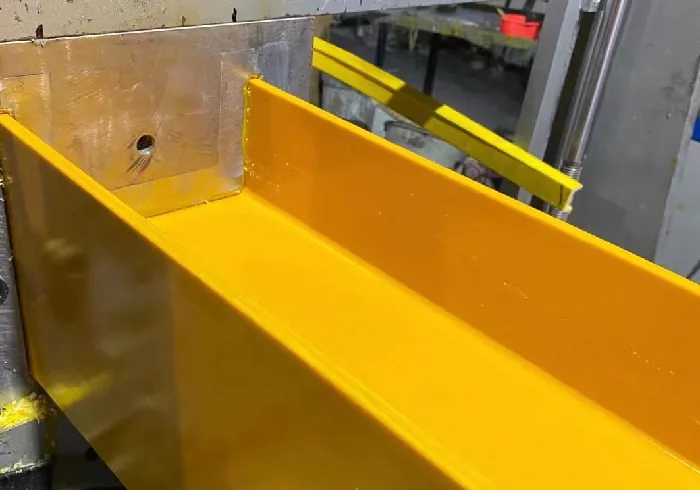loading...
- No. 9, Xingyuan South Street, Dongwaihuan Road, Zaoqiang County, Hengshui, Hebei, China
- admin@zjcomposites.com
- +86 15097380338
- Welcome to visit our website!
ro membrane housing
Understanding RO Membrane Housing An Essential Component of Water Purification
In an era where clean water is becoming a rare commodity, the importance of water purification systems cannot be overstated. One critical component of these systems is the Reverse Osmosis (RO) membrane housing. Understanding its function and significance can provide insights into how water treatment processes work and why they are essential for both personal and industrial applications.
What is RO Membrane Housing?
RO membrane housing is a cylindrical container that houses the RO membrane, which plays a pivotal role in the reverse osmosis process. The membrane itself is a semi-permeable barrier designed to allow water molecules to pass through while effectively blocking a majority of dissolved solids, chemicals, and impurities. The housing not only protects the delicate membrane from damage but also ensures that water flows in the correct direction, maintaining optimal pressure and flow rates.
Typically made from durable materials like PVC or stainless steel, RO membrane housings are designed to withstand high pressure and corrosive environments. The robust construction is essential, as the reverse osmosis process often requires water pressures ranging from 40 to 120 psi. The reliable design of the housing ensures that the system operates efficiently and extends the lifespan of the membrane inside.
How Does It Work?
The reverse osmosis process begins when water is pushed through the RO membrane under high pressure. As water enters the housing, the membrane filters out contaminants such as salts, bacteria, and other impurities, allowing only pure water to pass through the membrane. The filtered water then flows into a storage tank, later to be distributed for use. The remaining contaminants are flushed away as wastewater.
RO membrane housings come in various sizes and configurations, catering to different applications—from residential water purification systems to large-scale industrial setups. The size of the housing typically corresponds to the volume of water to be treated and the specific quality requirements of the end product.
ro membrane housing

Importance in Water Purification
The significance of RO membrane housing cannot be understated. By effectively protecting the RO membrane and ensuring optimum functioning, it plays an essential role in delivering safe, potable water. Contaminated water sources can lead to severe health issues, thus making it imperative to utilize effective purification methods like reverse osmosis.
In residential applications, RO systems equipped with robust membrane housings are able to provide families with clean drinking water, which is particularly crucial in areas where groundwater or tap water is less than ideal. In industrial applications, the membranes help in processes such as desalination, ensuring that large quantities of water are purified efficiently to meet production needs.
Maintenance and Replacement
While RO membrane housing is designed for durability, it is not entirely maintenance-free. Regular checks for leaks, pressure drops, or signs of wear are crucial to ensure the system operates smoothly. The RO membrane itself typically needs to be replaced every 2-5 years, depending on the quality of the input water and system usage. Maintenance of both the membrane and its housing is vital for long-term performance and efficiency.
Future Developments
As technology advances, the field of water purification is constantly evolving. New materials and designs for RO membrane housing are being developed to enhance performance and reduce costs. Innovations may include advanced anti-fouling materials, energy-efficient designs, and even smart technologies that monitor system performance in real-time.
In conclusion, RO membrane housing is a fundamental component of water purification systems, vital for producing high-quality drinking water. Understanding its function and importance helps in appreciating the intricate processes involved in water treatment. As we move towards a more sustainable and health-conscious world, the advancements in membrane technology promise even more effective solutions for clean water access. Whether for home use or large-scale applications, the role of RO membrane housing remains central to the efforts of ensuring safe and potable water for all.
-
The Rise of FRP Profiles: Strong, Lightweight, and Built to LastNewsJul.14,2025
-
SMC Panel Tanks: A Modern Water Storage Solution for All EnvironmentsNewsJul.14,2025
-
GRP Grating: A Modern Solution for Safe and Durable Access SystemsNewsJul.14,2025
-
Galvanized Steel Water Tanks: Durable, Reliable, and Ready for UseNewsJul.14,2025
-
FRP Mini Mesh Grating: The Safer, Smarter Flooring SolutionNewsJul.14,2025
-
Exploring FRP Vessels: Durable Solutions for Modern Fluid HandlingNewsJul.14,2025
-
GRP Structures: The Future of Lightweight, High-Performance EngineeringNewsJun.20,2025
